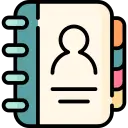-
Sale!
MCS-21 + MCS-22 + MCS-23 + MCS-24
IGNOU MCA Computer Application Combo
Original price was: ₹1,700.00.₹850.00Current price is: ₹850.00.Bought by : 3269 StudentsIn Stock Only 0 left ! -
Sale!
MCS-22
Operating System Concepts and Networking Management
Bought by : 3082 StudentsIn Stock Only 0 left ! -
Sale!
MCS-22
Operating System Concepts and Networking Management
Bought by : 2247 StudentsIn Stock Only 0 left !






